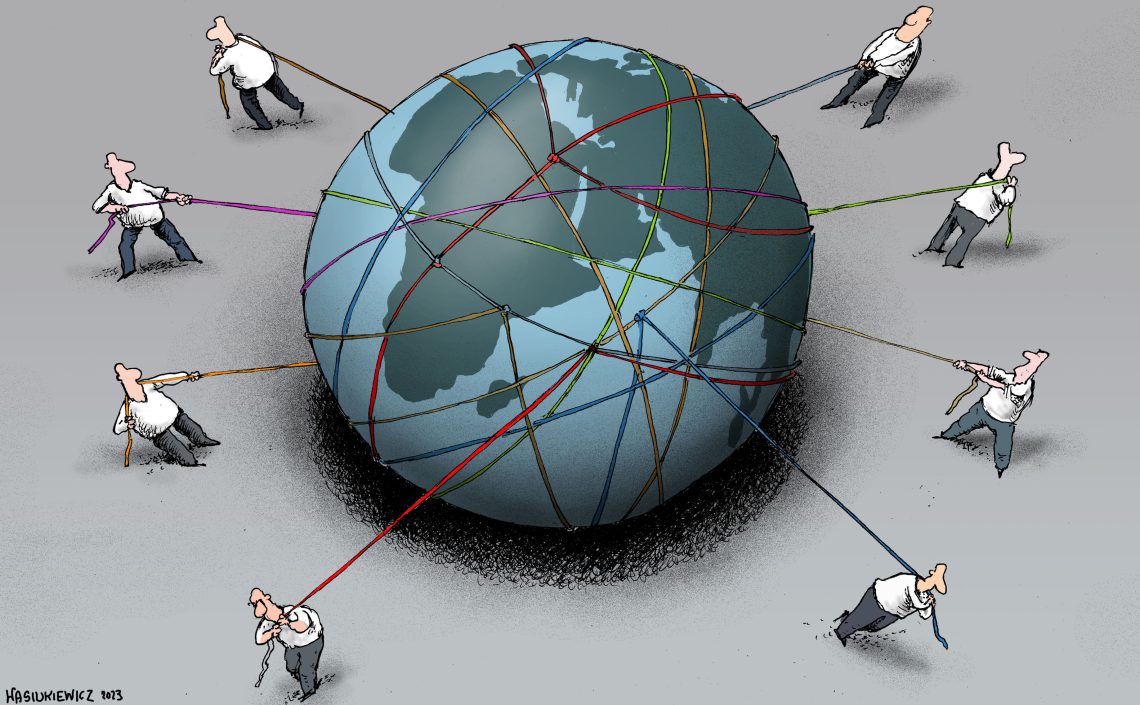The new geopolitical play
With the right statesmanship, a multipolar world can find its balance.

The United States, China, Russia, and to some extent, Europe, are generally assessed as the four main geopolitical players in the world. Within this club, the U.S. and Europe are defenders of the so-called “rules-based liberal world order” and the two others are seen as contesting it. In the West, this is seen as a conflict between democracies and authoritarians. But the situation is not so simple.
For a long time, with the U.S. being de facto the global hegemon, this world order functioned under Washington’s protection. This brought a lot of benefits, but even good things come to an end. Multipolarism is currently challenging this situation. A rules-based world order is very important for smaller states, but it needs to be upheld by larger powers. Multipolarism does not necessarily jeopardize the rules if a good balance exists. However, today we see increasing fragmentation. Power blocs are forming. Each appears to be dominated by one of the four main players. But this model is a simplification based on past roles. We must think outside the box.
Other powers are emerging
India will soon surpass China as the most populous nation in the world. It also has a fast-growing economy — around 7 percent annually. It is already the fifth-largest economy and could overtake Germany and Japan in a few years to rank third, behind only the U.S. and China. Its military is impressive. It has been a nuclear power for many years. Strategically its greatest challenge is managing confrontation with China. Both powers have been careful so far not to allow unrestrained escalation, although there are regular military confrontations along the Himalayan border. Those skirmishes are taking place in disputed areas in the Himalayas. But Beijing’s rising influence over Pakistan as well as its increasing naval presence in the Indian Ocean also pose major challenges for India.
New Delhi is a clever player on the international scene. The U.S. is one of its main partners. Alongside Australia and Japan, both countries belong to the Quad security alliance to contain China. But the government in India does not assume that “the enemy of my enemy is my friend.” It remains more pragmatic and does not directly antagonize either Moscow or Beijing.
India will increasingly replace China as the prime manufacturing exporter in the world, assuring the importance of the U.S. and Europe to its economic future.
India is very likely to join the group of major players soon. Russia, simply because of its size and strategic location, will remain a top-tier country, unless it disintegrates. The fate of Russia poses the biggest challenge for Europe.
Very good statesmanship is needed to balance the competing influences and to show that some rules in international law are finally advantageous for all and must be upheld.
Other looming challenges for the old continent are the Mediterranean Sea area and Africa. Maintaining its engagement in these locations is a major geopolitical issue for European capitals. Yet another priority is the transatlantic partnership along with Europe’s need to establish its own defense and deterrence capabilities to enforce security and interests.
In the past, regional powers aligned with one of the two global powers. This will change as such countries begin to take their fate into their own hands to protect regional interests. This is a promising evolution. A good example is that of Turkey. Ankara defends its needs on its own, much better than it would if it depended on the concepts of Washington, London, Berlin or Paris.
Indonesia is the fourth most populous nation in the world. It faces the same dilemma as all other Southeast Asian countries. Challenged by an assertive China, it keeps security ties with Washington. However, Beijing is its largest trading partner and will remain so. This is generally true for all 10 members of the Association of Southeast Asian Nations. These countries are framing common policies in a healthy way. Both Washington and Beijing lobby in Jakarta, Manila, Kuala Lumpur and Hanoi for their interests. However, Southeast Asian countries will continue to avoid completely siding with one of the two superpowers.
Japan, an economic giant, is now also heavily investing in its military capabilities. It will increasingly follow its own interests.
These situations are just some important examples. There are more. Outstanding statesmanship is needed to balance competing influences and to show that international rules are ultimately advantageous for all and must be upheld. Certainly, organizations such as the G20 have proven to be a failure. The solutions proposed in the G20 forum increase control over individuals and businesses. These freedom-limiting measures find common interest because they allow larger countries to dominate.
Long-term strategies need to be developed. Pragmatism and realism will have to prevail. Ideally, this should be spearheaded by the democratic world. Statesmanship is now in short supply in Europe and the U.S. Unfortunately, we must be prepared for a very bumpy road ahead.
